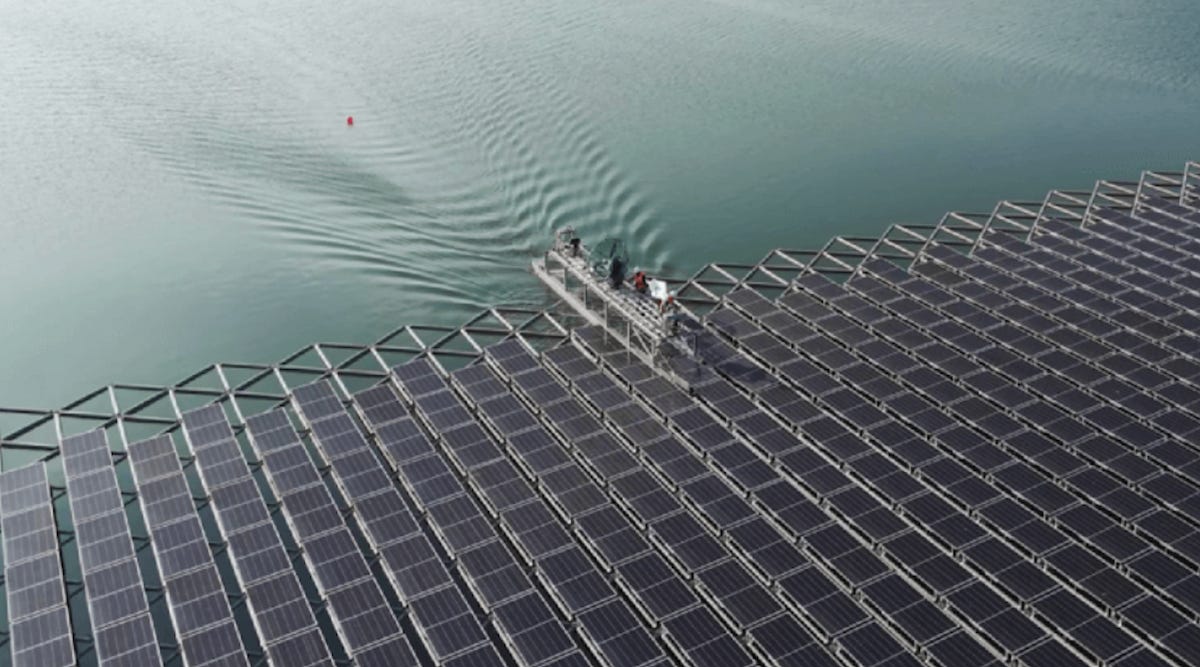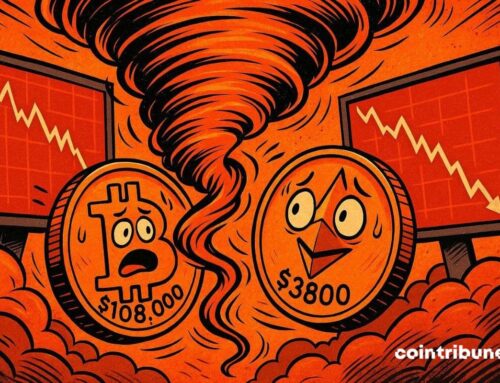Beyond the solar panel
October 22, 2025
Finding all the clever paths forward!
I’ve written an awful lot about power from the sun, wind, and batteries this year. That’s because we were heading up to the first Sun Day but also because this is the one corner of the climate fight that’s working reasonably well. As the price of clean energy drops, it’s become a load-bearing part of the change our civilization must make. And since it’s smart on its own terms—cheaper is better—it doesn’t require politicians with much courage to spur it along. (Which is…good, political courage never being in oversupply.) Also: in the darkest national moment of my lifetime, any ray of literal or figurative sunshine helps, and we have plenty of them to share: the solar revolution is very very real.
But as we speed towards Belem—site of this year’s global climate talks, which begin in a few weeks—we need to take stock of how far behind in the climate fight we are on oh so many fronts, and keep figuring out ways forward in all of them. Luckily, the Systems Change Lab—a consortium of some of the most skilled, veteran, and insightful climate analysts from around the planet—have just published their latest State of Climate Action report, and it provides us with a snapshot of where we find ourselves.
The bottom line is…not entirely encouraging.
A bold vision of collective action [at Paris] has now given way to a decade of mixed progress: remarkable advances, particularly in scaling up renewable energy and shifting to more sustainable forms of transportation, as well as the emergence of entirely new mitigation technologies, but slow progress and even backsliding in other areas
More specifically, to give the grim math of the moment (try to read this slowly, and take it in: it’s an apt short description on the earth in our moment on it)
The past 10 years have been the hottest on record, with 2024 the warmest yet (. Ocean heat content also reached an all-time high , with marine heatwaves unparalleled in severity, scale, and duration occurring within multiple ocean basins and triggering catastrophic coral bleaching across more than 80 percent of the world’s reefs. In the Arctic, winter sea ice cover fell to its lowest level ever observed in March 2025, while Antarctica saw its summertime sea ice cover simultaneously reach its second-lowest extent since recordkeeping began. Elevated sea surface temperatures also intensified hurricanes, increasing the wind speeds of every Atlantic hurricane in 2024 . And on land, unprecedented fires scorched entire communities and ecosystems, fueled by human-caused temperature rise superimposed on the warm phase of El Niño–Southern Oscillation . These fires, alongside extreme heat and drought across the tropics, contributed to an unprecedented weakening of the land sink in 2023 that, in turn, led to a significant rise in atmospheric concentrations of CO2.
Particularly grim notes: coal use continues to inch upwards, and deforestation has not slowed
In the three years leading up to the Paris Agreement, the world permanently lost an average 7.6 million hectares per year (Mha/yr) of forests. Deforestation has not fallen since, with the last three years witnessing permanent forest losses occurring at an annual average rate of 8.3 Mha/yr
Yes, we celebrate the good news. And it really is good news.
Clean energy investments hit a new milestone, surpassing $2 trillion in 2024, approximately twice the investments in fossil fuels. The world had its largest-ever increase in renewable energy generation in 2024 , and the share of global electricity produced from zero-carbon sources is now over 40 percent. China’s cumulative installed capacity of solar energy, alone, surpassed 1 terawatt (TW) in June 2025, 10 times more than solar capacity in 2017 and 1,000 times more than solar capacity in 2010
But we still need to look everywhere we can for more bright ideas and more political shifts.
So, leaving behind the global picture for a moment, consider this quietly brilliant new proposal, from the folks at Rewiring America, which would leverage the need of data center hyperscalers for more power to fundamentally reshape America’s (or, really, any country’s) energy landscape. It does this by asking not the obvious question (what new power supply can I build?) but with a subtler query: where in this system is there power to be found.
And the answer to that, often, is by looking at what we waste now.
An American household that uses electric resistance heating or cooling is wasting huge amounts of energy. But the people who live in it often can’t afford the upgrade to an electric heat pump that would efficiently supply their heating and cooling. So what if the data-center hyperscalers, instead of rushing up expensive and dirty diesel generators, agreed to fund the installation of those heat pumps in a bunch of homes? That would free up huge amounts of now wasted electricity, which we could then use to power this theoretically essential new industry. (As I wrote last week I’m pretty agnostic about how essential AI actually is, but there’s no denying it has political juice right now).
From a household’s perspective, a 50 percent hyperscaler discount on the upfront cost would enable them to get a heat pump for around $9,000. This brings the heat pump cost below the cost of a like-for-like alternative, such as an electric resistance furnace and a central air conditioner. It also makes the decision to upgrade to a heat pump an easy choice, and lets the household start saving money on Day 1. Pairing these investments with additional negotiated discounts or standardized installs that achieve economies of scale will create a virtuous feedback cycle that further lowers upfront costs for households and makes existing local incentives more efficient and effective.
Hyperscalers seeking capacity on the grid should first pay for home heat pump upgrades. This is faster than building new power plants. Since many of the power plants proposed for new construction or repowering burn coal or gas, it is significantly cleaner, and more insulated from future volatility in fuel prices. This is a win-win solution for hyperscalers, utilities, and households.
Indeed, the Rewiring America team has carefully overlaid the geography of heat pumps and the geography of data centers. To wit:
In Pennsylvania, data centers will add about 3 GW of new demand to the grid, and we have the opportunity to reduce current residential peaks by about 1.3 GW, or 45 percent of new demand, just by upgrading inefficient electric resistance heating to heat pumps.
So perhaps you could imagine a savvy Pennsylvania politician saying ‘let’s don’t build an expensive and polluting new powerplant to run a data center; instead, let’s have ChatGPT pay for my constituents to get better appliances and lower bills.’ You could even imagine the data guys going along, because the cost is about the same and the speed is unmatched. And as this happened, a virtuous cycle would start to emerge:
Initial investments in residential heat pumps, solar, and storage catalyze further changes in several ways. First, as discussed above, rooftop solar and storage will provide electricity to households at an effective cost of $0.11/kWh. Access to electricity at a fixed and affordable rate relative to gas prices will ensure that households save money on their energy bills when they switch from fossil fuel to electric appliances.
And by installing a high volume of heat pumps in homes currently using inefficient electric heating, cooling, and water heating, we will mature the already-growing market for heat pump installations. We will grow the workforce and increase contractor comfort with heat pump installs, driving upfront costs down and making heat pumps more affordable for everyone.
And that in turn will mean that we don’t need to spend a trillion dollars or so putting in new gas lines to replace aging ones. It’s all good. The Rewiring team makes the same case for rooftop solar and basement batteries: data centers would be better off paying for those in your house as well. “In Pennsylvania, in addition to the 1.3 GW of capacity created by upgrading electric resistance heating to heat pumps, solar and storage can offer another 3.2GW of capacity. This will total more than 150 percent of the expected 3 GW in new data center demand.”
(In fact, here’s a wonderful piece from one of the stalwarts in this business, the Aussie solar analyst Saul Griffith, calculating just how easy it would be to provide all the data center energy you could ever use off American rooftops).
Other players are thinking along somewhat the same lines. Voltus—a California-based builder of virtual power plants, which is to say a bunch of basement batteries linked together electronically—says their VPPs can supply much of what data centers require, and for cheap. As Jeff St. John reported
Last month, the firm unveiled its “bring your own capacity” plan. Put simply, the idea is for data center operators to pay other utility customers to reduce their power use when electricity demand peaks, a move that would diminish strain on the system without disrupting computing processes at data centers.
“You’re paying homeowners and business owners to be part of the solution to accommodate data centers,” one expert said. “They’re already facing large and growing bill increases, not just because of large loads but because of utility investments, costs of climate change. This is a way to offset that.”
The State of Climate Action report details that couple of dozen areas we need to be working this kind of magic on, from deforestation and agriculture to cement production to road transport. All of it is within the realm of the possible, but only just—and it gets harder the further down the global warming road we go. (Coal use nudged upwards last year because it got so hot that lots more people turned on the AC). Their mood was a kind of guarded pessimism: some stuff is finally working, but it needs to work…faster.
But there was one place where they were just plain grim, albeit in the calm tones appropriate for careful scholars:
In a particularly notable development this year, the world’s second-largest emitter and largest historical emitter, the United States, has scaled back climate policies and programs, reduced the scope of environmental agencies, and discontinued long-standing investments in climate science and decarbonization measures.
What they mean is, for Americans a key task is ridding ourselves of our mad king, last seen happily flying his AI jet to unload the contents of his bulging diaper on our heads. (He is, among so many other things, a gross pig). We got started with No Kings Day (if you’re feeling nostalgic for Saturday already, you can watch me give the concluding speech at Lexington Green) and we’ve got much work to do between now and the midterms.
If we do it right, perhaps it will be like the heat pump plan I outlined above. As we fight our necessary political battle, we can do it in such a way that the replacement process makes us stronger. Think what a sane and sound nation could produce: congestion pricing in more cities than New York. Smart ways to assist people needing to move off the coasts. A plan to force Big Oil to help pay for the energy transition out of the profits it earned during its long years of lying about the climate. Working railroads, and a la Paris thousands of miles of new bike paths. A carbon price that returned money to Americans. An army of small solar contractors replacing the fossil fuel workforce. In fact, imagine a politician savvy enough to put out a video that showed him dumping cash on Americans.
Hard work, not all of it glamorous but all of it necessary. Our work.
In other energy and climate news:
+There is, of course, beautiful good news about solar panels continuing to pop up everywhere. In the UK, beloved football club Manchester City has more or less covered its stadium with solar panels, providing power enough to run the school for aspiring footballers it conducts nearby. In Alaska, they’re learning to grow lots of food amongst the solar panels, and it’s profiting from the moisture retained beneath the array. (“The color difference in the spinach is fascinating,” said Jessie Young-Robertson, a University of Alaska Fairbanks professor who analyzed the samples. She said that the plants near the solar panels were a darker hue of green.) Last week I told you about largescale solar in Saudi Arabia—this week it’s Iran getting in on the act.
”Tehran is hoping that more solar capacity could ease an energy crisis that forced it to renew rolling blackouts this year, as it faced critical fuel shortages despite having the world’s third-largest oil reserves and second-largest natural gas reserves.”
Oh, and a French firm unveiled a new kind of floating solar farm that can be serviced by…catamarans.
The company has also focused attention on reducing maintenance costs while avoiding worker safety risks, deploying a specialized boat for the task. “Fusio® revolutionizes FPV maintenance through its exclusive catamaran-based process, enhancing the power plant yield over time while making maintenance work safer and more efficient,” Ciel & Terre enthuses. “This specialized boat navigates directly over the floating solar structure, providing easy, fast, and secure access to every single PV panel, inverter, and cabling.”
“The system eliminates the need for operators to walk on the array or manually transport heavy electrical devices across the FPV plant,” they add.
+So you think the elections to the Georgia Public Service Commission aren’t that interesting? Here’s a Star Wars version of the contest, which will be decided next month. It’s rebels against the Death Star to decide “who should benefit from Georgia’s energy system — ratepayers struggling with rising bills, or the monopoly utility that has consistently increased profits even as costs soared?”
+Ninety percent of the deaths from extreme weather events come in the developing world, and the UN is calling for a special system of worldwide disaster alerts
“Many millions of people lack protection against dangerous weather, which is inflicting an increasing toll on economic assets and vital infrastructure,” said a statement by the World Meteorological Organization, noting that disaster-related deaths are six times higher in countries without early-warning systems.
This is powerfully true—the best system I’ve ever seen is along the coast of Bangladesh, where hundreds of thousands were once killed by storm; now there are shelters, and a well-designed system to let each mosque notify residents of when the time has come to move.
+Who needs batteries? The Dept of Energy just cancelled $700 million worth of Biden-era contracts for advanced battery factories, in a move that left Chinese officials chuckling that they said was designed to save money. From Christa Marshall:
Democrats charge that DOE’s actions are illegal and will hurt the economy and slash jobs. Last week, 37 Democratic and independent senators said in a letter to Wright that “the illegality of your cancellations is the only thing as indisputable as the harm your cancellations will wreak.”
The department “must expend these funds and faithfully execute the law, including many programs that have strict requirements for the timing of fund expenditure, purposes, and contractual expectations,” the lawmakers said.
+One more reason to look sideways at AI—as Mitchell Beer reports, a company is claiming it can use the technology to help oil companies find a trillion more barrels of crude
“Forget new fields,” enthused WoodMac analysts Andrew Latham, Orla Marnell, and Josh Dixon, in a pitch for the firm’s AI-powered Analogues tool titled “Every last drop: Using AI-powered analysis to find oil-field upside potential”. The tool covers “reservoir geology, hydrocarbon quality, in-place resources, operator access to finance and technology, costs and fiscal terms” for “every significant field in the world,” they said.
The paper specifically urged state-owned fossil companies (national oil companies, or NOCs) to “step up” and “open up” to extraction practices adopted by more established oil producers like Norway and the UK. “The future of the oil industry will be increasingly onshore and operated by NOCs,” the three authors stated. “Russia and much of OPEC, with less access to technology, challenging fiscal terms, and difficult rocks and fluids, have scope to grow market share”…
The report from Wood Mackenzie makes no reference to the more than 400 billion additional tonnes of carbon dioxide emissions that would result, or the implications for a climate emergency that is already speeding out of control.
+At Forbes, Ingmar Rentzhog sees a collapse in the Russian coal industry
Russia’s coal collapse marks the breaking point of the fossil era. With thermal-coal prices down nearly 80 percent from their 2022 peak and over half of Russia’s producers now losing money, Moscow’s lifeline industry is imploding — even as renewables, batteries, and storage become the fastest-growing assets in the world economy.
According to the Financial Times, the sector lost Rbs 225 billion (≈ US$2.8 billion) in the first seven months of 2025 — more than double 2024’s total losses — as exports vanished and subsidies fail. Twenty-three coal companies — about 13 percent of the national total — have already shut down, and another 53 are at risk of closing. Once Russia’s fourth-largest export, coal has become its worst-performing industry in more than 30 years.
Meanwhile, in Australia rooftop solar is taking a big bite out of coal.
Rooftop solar on homes and businesses took its biggest bite yet out of the traditional “baseload” midday lunch on Wednesday, as the combined output hit a record of 15,597 megawatts (MW) at noon AEST.
The record, which beat the previous high set earlier in the month by more than 500 MW, also took the market share of rooftop solar and large scale on Australia’s main grid to a new peak of 71.5% around the same time.
But the coal industry shouldn’t lose heart, because the Trump administration has a $625 million plan to “rescue” the black rock. Brad Plumer and Lisa Friedman:
In a series of steps aimed at improving the economics of coal, the Interior Department said it would open 13.1 million acres of federal land for coal mining and reduce the royalty rates that companies would need to pay to extract coal. The Energy Department said it would offer $625 million to upgrade existing coal plants around the country, which have been closing at a fast clip, in order to extend their life spans.
+In Foreign Affairs, Jason Bordoff and Meghan O’Sullivan argue that countries are using energy as a weapon—but they contrast the Chinese and American approaches:
The possibility that China couldweaponize clean energy supply chains is real, bringing with it the potential to limit the ability of many countries to deploy newolar panels, or battery storage for the grid. Unlike with oil or gas, however, such tactics would not jeopardize the flow of energy itself. China’s weaponization of supply chain concentration would not quickly cause lights to go out, cars to sit idle, or homes to freeze. Instead, it would lead to higher costs and delays for products that produce and store energy. And although such supply chain risks could have significant economic impacts, these would be easier for most countries to address over time. Unlike the production of fossil fuels, which depends on the good fortune of geology, manufacturing capacity can be ramped up in most places. For those reasons, on energy security grounds alone, the United States should reconsider its current retreat from policies thatseek to modernize and expand the electric grid and to develop more domestic clean energy generation and manufacturing.
+A signal event in climate journalism as the great Sammy Roth leaves the LA Times to start writing a newsletter called Climate-Colored Goggles. “I’m invigorated,” he writes in his opening manifesto,
Because what I’ve realized — what drove me to start this newsletter — is that the climate crisis is in large part a cultural problem. We have most of the technologies we need to phase out fossil fuels and slash planet-warming pollution from agriculture and other industries. But we’ll never muster sufficient political will until our cultural consciousness shifts.
Meanwhile, from the remarkable team at Drilled, a new podcast, Carbon Bros, about how the fossil fuel industry found friends in the manosphere.
Manosphere figures like Andrew Tate, Joe Rogan and Jordan Peterson aren’t just telling men how to treat their girlfriends or train for MMA fights; they’re also blasting their listeners with climate denial talking points. Which isn’t a coincidence. The fossil fuel industry has known since at least the 1990s that certain types of men are more susceptible to climate disinformation than other segments of the public.
+You know what president Poopjet hasn’t shut down? The federal licensing system for oil and gas. As the Times reports
The workers responsible for carrying out the president’s plans for more fossil fuels and less wind and solar power are still hard at work. Some are approving permits for companies that want to extract metals, coal, oil and gas from public lands and federal waters. Others are rolling back limits on the greenhouse gas emissions that are driving climate change.
Oh, and they’re also still letting hunters on to wildlife refuges. According to the WaPo
Administration officials have directed remaining refuge staff to continue working to support hunts, while refuge visitors centers remain closed, according to the FWS employees who spoke on the condition of anonymity because they were not authorized to speak to the media. One of the people said that unpaid FWS workers were asked to open gates for hunters, while another said an unpaid skeleton crew of refuge staff and law enforcement are working to support hunting.
+From Egypt, a remarkable artwork: Siberian artist Elena Tengri produced a seven-ton ice sculpture of a bull’s horns, and left them to melt in the desert sun
Originally from Yakutia — the coldest inhabited region on Earth, where temperatures plummet to -70°C — Tengri , who belongs to the Siberian ethnic minority Sakha, draws inspiration from the ancient Sakha myth of the Bull of Cold. According to legend, the breath of this giant Arctic spirit’s brings wintertime to Siberia, and when its horns fall and melt at season’s end, warmth returns to the land. In Tengri’s contemporary interpretation, the melting horns become a stark metaphor for global warming.
Search
RECENT PRESS RELEASES
Related Post






